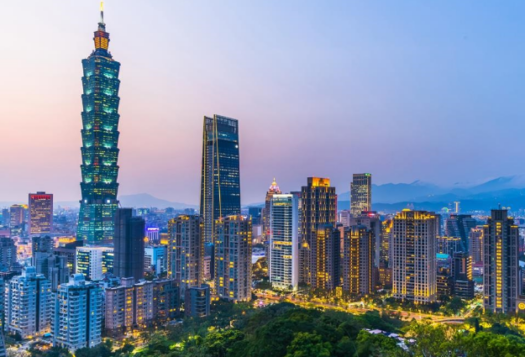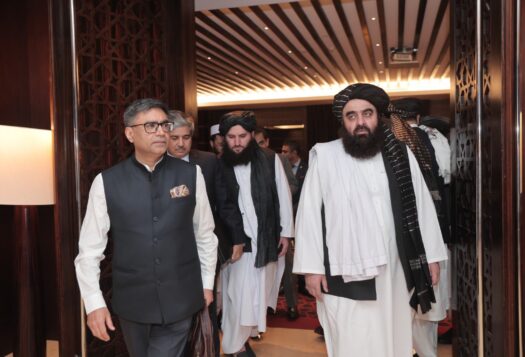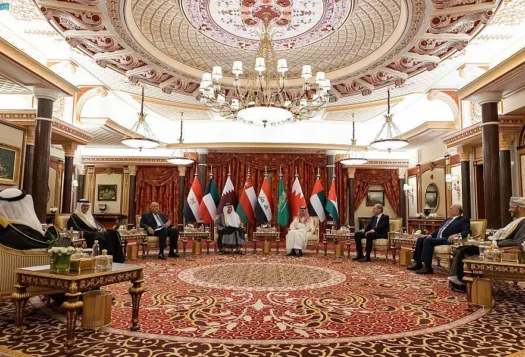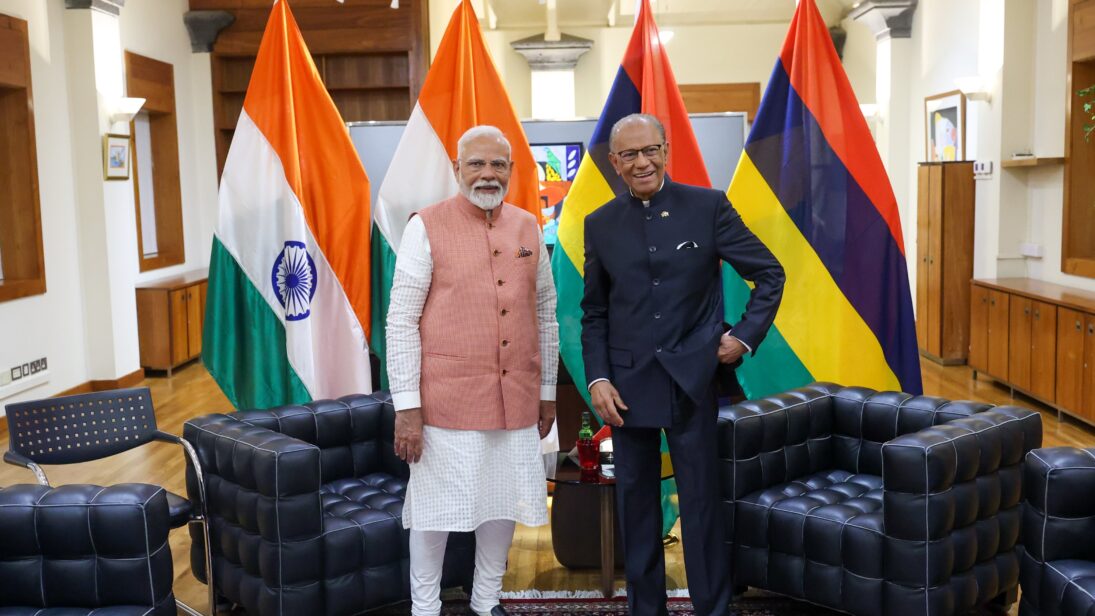
Earlier this month, on the invitation of Prime Minister Navin Ramgoolam, Indian Prime Minister Narendra Modi visited Mauritius to celebrate the country’s National Day as the chief guest. This visit can also be seen as an effort by New Delhi to expand its influence in the strategically significant Western Indian Ocean Region (WIOR). During his previous visit to the country in 2015, Modi unveiled India’s Security and Growth for All in the Region (SAGAR) vision for maritime security. This time, he elevated this vision to the Mutual and Holistic Advancement for Security and Growth Across Regions (MAHASAGAR).
Mauritius and the broader WIOR have become increasingly significant in global geopolitics, considering that they are located at a pivotal junction in global trade. In recent years, all major global powers have competed for influence in this part of the world, but particularly China. In this context, India’s burgeoning ties with Mauritius and its evolving assets in the WIOR will be key for New Delhi in safeguarding its own interests and strengthening its strategic posture in this critical region.
Why Mauritius Needs India
India has been a longstanding partner for Mauritius in building its maritime capabilities. In 2017, India leased an Interceptor Boat C-139 and onboard equipment to the National Coast Guard of Mauritius. During Modi’s recent visit, the Indian Navy and the Mauritius Coast Guard signed a technical agreement to share white shipping information and help Mauritius in the maritime surveillance of its Exclusive Economic Zone (EEZ). India would also provide defense assets, joint maritime surveillance, hydrographic surveys, and regular patrolling. Previously, Indian naval vessels conducted several hydrographic and oceanographic surveys on behalf of Mauritius free of charge, thereby enabling Port Louis to revise its antiquated nautical charts and create new ones.
Mauritius and the broader WIOR have become increasingly significant in global geopolitics, considering that they are located at a pivotal junction in global trade. India’s burgeoning ties with Mauritius and its evolving assets in the WIOR will be key for New Delhi in safeguarding its own interests […] in this critical region.
Such cooperation is economically critical to Mauritius. The country’s EEZ measures approximately 2.3 million square kilometers, with another 400,000 square kilometers jointly managed with the Seychelles. Its blue economy represents over 10 per cent of its national Gross Domestic Product and employs around 10,000 people, excluding coastal tourism. The success of the blue economy is especially critical to Mauritius’ efforts to attract foreign investment across sectors such as port infrastructure, shipping, tourism, seafood, fisheries, aquaculture, underwater cultural heritage, and renewable energy. To that end, the country recently launched an Ocean Economy Roadmap and established a new Ministry of Blue Economy, Marine Resources, Fisheries and Shipping to implement it.
However, such initiatives face serious security challenges, which have necessitated deeper cooperation with India. Mauritius continues to suffer from a substantial volume of illegal, unregulated and unreported fishing, which depletes its fish stocks, impacts its food security, and harms its marine environment. Ascertaining the identity of illegal foreign fishing vessels has been difficult. In order to do so, Mauritius recently decided to use satellite imagery and artificial intelligence. On its part, New Delhi deploys naval ships to Mauritius for the joint surveillance of its EEZ to combat piracy and illegal fishing. India also hosts the Indian Information Fusion Center for the Indian Ocean Region (IFC-IOR)—a forum that enhances maritime domain awareness through information sharing and cooperation. Mauritius is among the 12 partner nations represented within it by a liaison officer.
In addition to security cooperation, New Delhi has also played the role of a reliable first responder to Port Louis by providing humanitarian aid during crises. India’s commitment to this role was in full display following the devastation caused by Cyclone Chido in December 2024. During Modi’s recent visit, Prime Minister Ramgoolam acknowledged India’s support in rescuing workers and providing supplies during that crisis, as he affirmed his commitment to elevating the bilateral relationship to an “enhanced strategic partnership.”
India’s Aspirations in the Western Indian Ocean
As 70 percent of the Mauritian population traces its roots back to India and about half of the population is Hindu, New Delhi has long been a significant force in Mauritian affairs. Strikingly, Mauritius’ national security adviser and the head of the coast guard have always been Indian.
In addition to these historic, cultural and diplomatic ties, Mauritius’ significance to India stems from its strategic location in the WIOR. Located at a central trans-shipment point linking the southeastern coast of Africa to the wider Indian Ocean and beyond, the WIOR is an important locus of international sea lines of communication and carries around one-third of the world’s oil. The region is also rich in natural resources, including fisheries, rare earth minerals, and natural gas, thereby eliciting global interest in seabed mining and deep-sea excavations.
In recent years, geopolitical competition over the region has consequently grown. Since 2017, China has maintained a military base in Djibouti and extended its engagement with and presence in Mauritius and other island nations of the region through military training, infrastructure construction, and financial assistance, among other things. It regularly deploys destroyers and frigates, and has posted at least one submarine to conduct anti-piracy missions off Somalia. In 2019, China signed a Free Trade Agreement with Mauritius—its first with an African country. Chinese firm Huawei has also established a significant presence in the country, including by installing its close-circuit television surveillance system.
Given its diplomatic, cultural, and commercial connections in the region, India considers the WIOR a part of its extended neighborhood. Despite geographically being part of Africa, New Delhi categorizes both Mauritius and the Seychelles under the Indian Ocean Region (IOR) Division of its Ministry of External Affairs, alongside more proximate states such as Sri Lanka and the Maldives. India is therefore keen to safeguard its influence against Beijing in this region.
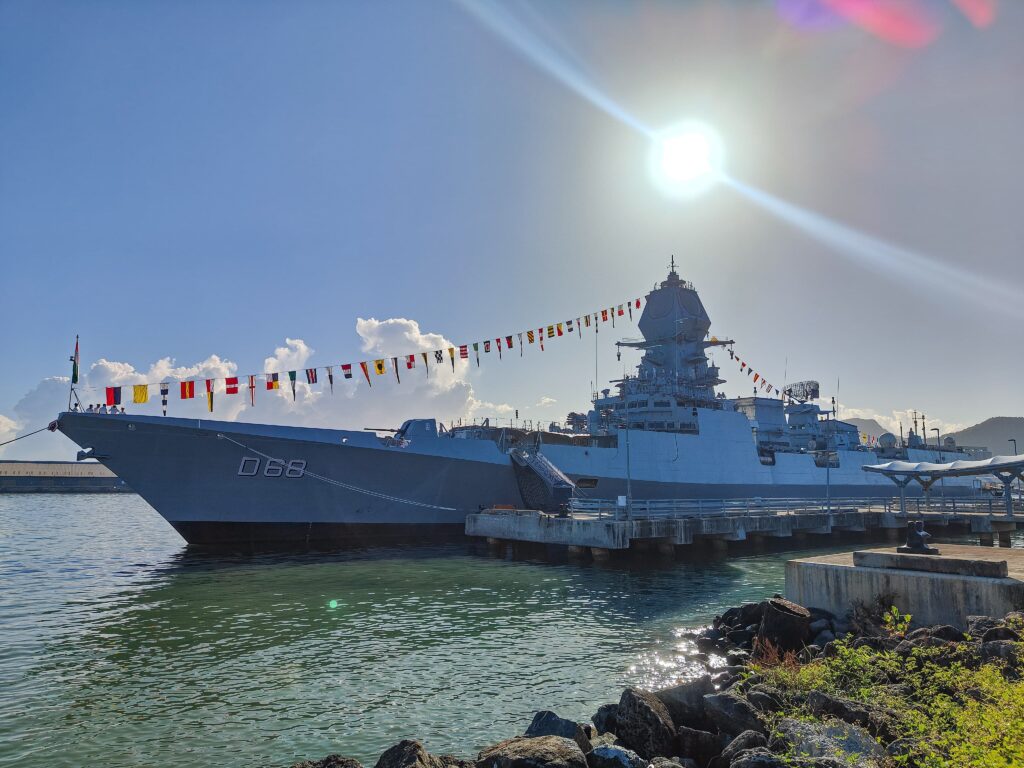
In order to bolster its presence, New Delhi was previously trying to build a naval base on Assumption Island in the Seychelles—an important island country in the WIOR. However, changes in political power in that country paused the deal. Instead, in February 2024, India inaugurated a new airstrip and jetty on Agalega Island in Mauritius. This infrastructure is expected to help India enhance its maritime presence and monitor the Mozambique channel, leading to improved regional security. The Indian Navy has also signed 22 white shipping agreements with countries in the IOR. Soon, New Delhi may also consider placing a defense attaché in Mauritius, helping India monitor security developments and gain a stronger foothold in the region. Partnerships with Mauritius and the Seychelles have become especially critical to New Delhi in light of the fact that it had to withdraw its troops from the Maldives last year.
Leveraging an Evolving Geopolitical Landscape
Amid China’s growing presence, major Western powers such as the United States, the United Kingdom, and France have looked upon the WIOR as an important battleground, deploying an increasing number of naval missions to the region in recent years. The United Kingdom and the United States also have a joint naval base in Diego Garcia, overlooking the region, while France maintains its presence through its overseas territory of Réunion Island.
As New Delhi looks to improve its strategic influence in the region, it has the opportunity to build a symbiotic relationship with Western partners by leveraging its evolving assets and presenting itself as a counterweight to China. Given its existing assets in the WIOR, France has emerged as an especially significant partner. New Delhi has a logistics exchange agreement with France, allowing Indian warships and military aircraft to use French bases in Djibouti and Réunion Island for resupply, services, and other functions. In fact, prior to the construction of the Agalega airstrip, India previously stationed its larger fleets, including P-8Is, on Réunion Island. In 2020, France helped India gain observer status in the Indian Ocean Commission (IOC), an intergovernmental body consisting of five littoral countries of the region. In return, France hopes to cultivate its partnership with India in the WIOR to improve its engagement with the Global South.
As New Delhi looks to improve its strategic influence in the region, it has the opportunity to build a symbiotic relationship with Western partners by leveraging its evolving assets and presenting itself as a counterweight to China.
India may similarly be able to leverage its position in the WIOR — and in particular, its growing partnership with Mauritius — in its relationships with the United Kingdom and the United States. In October 2024, the United Kingdom ceded its sovereignty over the Chagos Archipelago and handed the islands back to Mauritius. New Delhi had extended persistent support to Port Louis over this issue. As the future of Diego Garcia now hangs in precarious balance, the United Kingdom and the United States would be keen to secure India’s support for their position and leverage New Delhi’s growing influence over Mauritius. In particular, given that both Mauritius and the United States have witnessed a change in government, New Delhi could function as a reliable mediator for a peaceful transfer.
As the Joint Vision for an Enhanced Strategic Partnership unveiled during Modi’s recent visit revealed, India is set to deploy more ships and aircraft for joint maritime surveillance in the region. Considering the fierce battle for influence in the WIOR, enhanced maritime cooperation with Mauritius will go a long way in establishing India’s role as a net security provider, marking the success of India’s Mahasagar vision.
Also Read: Lakshadweep and Agalega: Implications of India’s Naval Dominance
***
Image 1: Narendra Modi via X
Image 2: Spokesperson, Indian Navy via X
Views expressed are the author’s own and do not necessarily reflect the positions of South Asian Voices, the Stimson Center, or our supporters.
